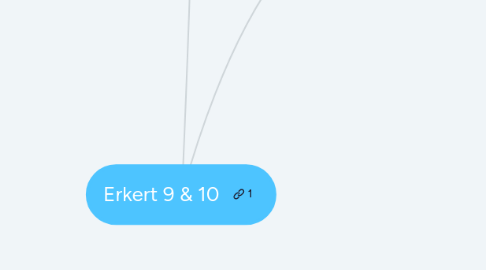
1. Body Listening: Corrections
1.1. "Listening to the body is the art of seeing, sensing, doing, undoing, feeling, and touching - making connections between the whole and all its parts."
1.1.1. Listening to the body means an awareness of self in relation to internal sense and external space.
1.2. "The body is a complex system of neurological patterning, physical realities, hereditary gifts, emotional scars, memories, and stories."
1.2.1. Our physicality is informed by more than just the form of our body. Our history, ancestry, and lived experiences reside within us and are a part of how we exist in the world.
1.3. "It is critical for the dance teacher to listen to the language of the dancers before entering their complex webs"
1.3.1. Teachers must not try to change, teach, train, or improve someone without a semblance of information on who the student is.
1.4. Seeing and Sensing
1.4.1. Developing an Eye
1.4.1.1. Teachers must learn to look at the body holistically even when giving targeted corrections. Because of how the body's systems are integrated most corrections are in some way related to a part of the body other than the spot where the issue manifested. Acknowledging and addressing this will leave the student with more information and more able to make efficient progress.
1.4.2. Filtering Information
1.4.2.1. "Nothing is accomplished when too many suggestions exist, so rivet the attention towards one comment. Simplify everything at that moment."
1.4.2.1.1. Be mindful not to overload a student with information. Give precise and concise information/suggestions so the student has something to focus on.
1.4.3. Observing From All Angles
1.4.3.1. "Roaming the class or facing it in different directions gives different information than holding court from the front."
1.4.4. Knowing Oneself
1.4.4.1. "A dance teacher must learn to observe not only visually but also kinetically."
1.4.4.1.1. Because movement is essential for dance and movement is a common denominator in our everyday lives, dance class could be said to be happening around us all the time. Bringing our awareness to the physicality, aesthetics, and kinesthesia of the world around us will only serve to bolster the teaching practice.
1.5. Reflexes
1.5.1. Building Blocks
1.5.1.1. Bonnie Bainbridge Cohen: Primitive Reflexes, Righting Reactions, and Equilibrium Responses
1.5.1.1.1. Primitive reflexes control basic moving patterns, righting responses keep the head over the spine, and equilibrium responses have to do with balancing and recovery.
1.6. Alignment and Posture
1.6.1. Dynamic Alignment
1.6.1.1. "The dance teacher is searching for efficient, dynamic alignment of the bones. An engineer is trained to see the results pf the forces of gravity: weight, compression, tension,torsion, and sheer. But there are other forces for the human being. Psychological and emotional forces also play a role"
1.6.1.1.1. Dynamic alignment has to do with finding functional alignment of the body as it moves through space. This alignment must also be harmonized with the body's emotional and psychological state.
1.6.2. Postural Patterns
1.6.2.1. "Posture is an accumulation of physical and psychological forces acting on a structure, as a riverbed that has been shaped by the river that runs through it"
1.6.2.1.1. Our posture is often times reflective of our perceptions of ourselves and how we should present our existence to the world. Asking a student to alter this state may very well be more than physical correction but also a psychological and emotional dilemma.
1.7. Touching
1.7.1. Pressure
1.7.1.1. Changing your own or the students' spatial orientation may reveal new information that can benefit the student.
1.7.2. Safe Touches
1.7.2.1. Everyone has varying levels of availability to being touched. Physical contact is often a part giving corrections in dance training. It is important to be sensitive to a student's comfort levels and how body parts are perceived socially when touching a student.
1.7.3. Awareness Within the Teacher's Body
1.7.4. Collaboration Between Student and Teacher
1.7.5. The Still Point
1.7.6. Spatial Intent
1.8. Empowering Student Observation
1.8.1. Presenting Historical Context
1.8.2. Asking the Right Questions
1.8.3. Developing Students' Independence
1.8.4. Private Discussions
2. Space Moving Images
2.1. Power of Images and Metaphors
2.1.1. Images in Somatic Training
2.1.2. Short History of Ideokinesis
2.2. Developing a Bag of Tricks
2.2.1. Direct and Indirect Images
2.2.2. Inner and Outer Imagery
2.2.3. Potent Images
2.2.4. Cultural and Geographical Relevance
2.2.5. Ineffective Images
2.2.6. Anatomical Correctness
2.2.7. Developing the Danceartist
2.3. The Senses
2.3.1. Vision
2.3.2. Sound
2.3.3. Kinesthetic
2.3.4. Smell and Taste
